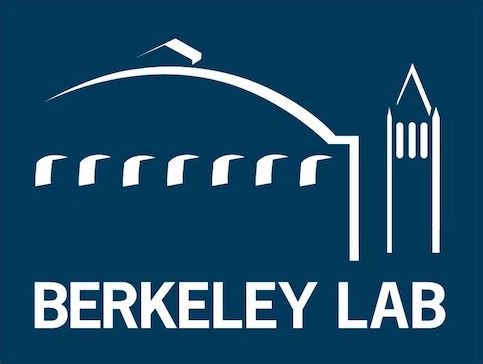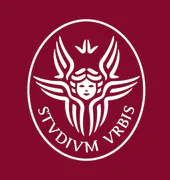About me
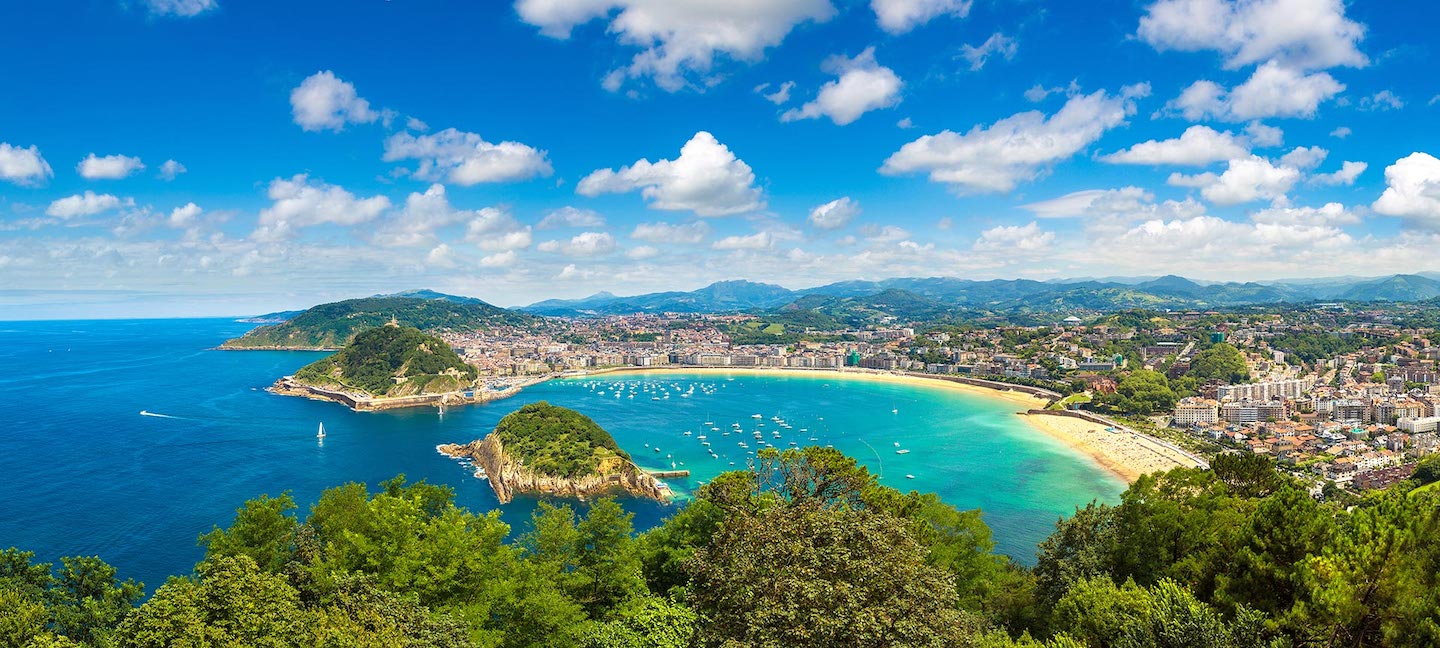 View of Donostia-San Sebastián from Monte
Igueldo.
View of Donostia-San Sebastián from Monte
Igueldo.
I am a particle physicist currently working at the Donostia
International Physics Center (DIPC) as Ikerbasque Research Fellow and “La
Caixa” Junior Leader.
I am a member of the NEXT collaboration, whose goal is
to
detect a rare kind of radioactive decay called neutrinoless double beta decay, which has
never been observed before. The observation of such a process would prove that neutrinos are
Majorana particles. This, in turn, would provide an experimental evidence for some theories which
are able to explain why the universe is predominantly made of matter and not of antimatter.
Before joining the DIPC I was a Chamberlain Fellow at the Lawrence Berkeley National Laboratory, working on the Mu2e and
DUNE experiments.
I obtained a PhD in Particle Physics in 2019 at the University of
Oxford, with a
thesis on the search for a low-energy excess of electron neutrinos in the MicroBooNE experiment.
Originally from a small town in Apulia, Italy, I moved
to Rome where I obtained a Bachelor and a Master in Physics at Sapienza – University of Rome.
During my master thesis I developed the prototype of the electromagnetic calorimeter for the Mu2e experiment. After the thesis I won a fellowship at the Frascati National Laboratories of the INFN, to continue working on the Mu2e experiment.
Research
NEXT

The NEXT experiment is an international collaboration
that searches for the neutrinoless
double-beta decay at the Canfranc Underground
Laboratory (LSC) in Canfranc, Huesca (Spain), under mount Tobazo.
NEXT stands for Neutrino Experiment with a Xenon TPC. The detection concept consists of a Time
Projection Chamber filled with high-pressure gaseous Xenon (HPXe-TPC), which exploits the
electroluminescence process for the detection of the signal. The detector provides
separated-function capabilities for calorimetry and tracking.
The observation of the neutrinoless double-beta decay would prove that neutrinos are their own
antiparticles, making them the only Majorana particle in the Standard Model. This property, in turn,
would provide an experimental evidence for some theories which are able to explain why the universe
is predominantly made of matter and not of antimatter.
DUNE

The Deep Underground Neutrino Experiment (DUNE) is a
leading-edge, international experiment for neutrino science and proton decay studies. Discoveries
over the past half-century have put neutrinos, the most abundant matter particles in the universe,
in the spotlight for further research into several fundamental questions about the nature of matter
and the evolution of the universe — questions that DUNE will seek to answer.
DUNE will consist of two neutrino detectors placed in the world’s most intense neutrino beam. One
detector will record particle interactions near the source of the beam, at the Fermi National Accelerator Laboratory in Batavia, Illinois. A
second, much larger, detector will be installed more than a kilometer underground at the Sanford Underground Research Laboratory in Lead, South Dakota
— 1,300 kilometers downstream of the source. These detectors will enable scientists to search for
new subatomic phenomena and potentially transform our understanding of neutrinos and their role in
the universe.
I am working on the prototype of one of the detectors, which employes a 3D pixelated charge readout to detect neutrino
interactions.
Mu2e
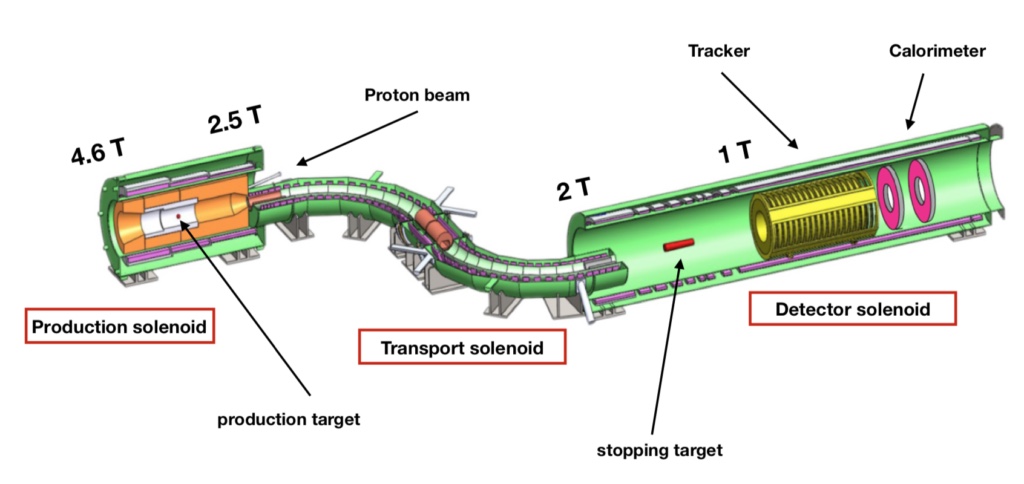
The goal of the Mu2e experiment is to search for the conversion
of a muon into an electron. Muons are charged leptons like electrons, but around 200 times heavier
and with a mean lifetime of 2.2 μs, which is relatively long if compared with other sub-atomic
particles.
First discovered in 1936 while studying cosmic rays, muons can be thought as heavy
electrons, since they are not subject to the strong nuclear force. The eventual observation
of the conversion of a muon into an electron would be a clear signature of physics beyond the
Standard Model.
The Mu2e experiment, currently under development at the Fermi National Accelerator Laboratory, will
search for the conversion of a muon into an electron by using an artificial, high-intensity proton
beam. It is expected to start acquire data in 2025.
MicroBooNE
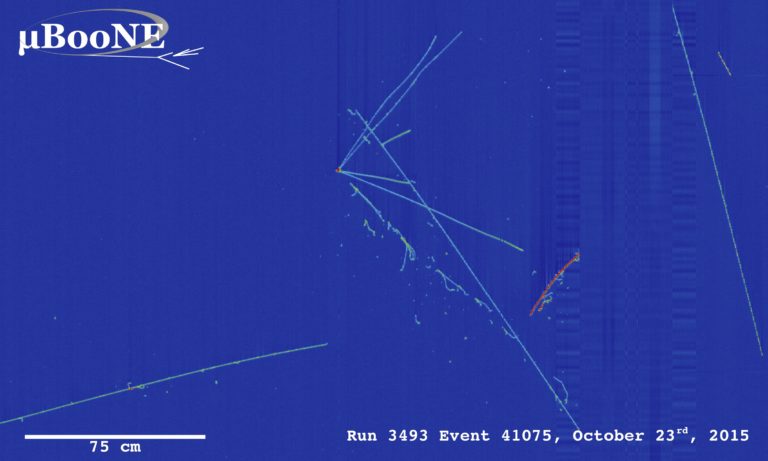
Neutrinos are very lightweight particles (their mass is much lower than that of the other known
elementary particles) which interact only via the weak subatomic force and gravity.
Thus, neutrinos typically pass through normal matter without impediment and they are then very
difficult to detect.
During my PhD I worked on the MicroBooNE experiment, a
liquid argon time-projection chamber (LArTPC) designed for short-baseline neutrino physics. My
research is focused on the appearance of electron neutrinos in the detector. LArTPCs provide
extremely detailed pictures of the particles produced in a neutrino interaction and they make
possible a broad range of physics measurements.
MicroBooNE was the biggest LArTPC currently active in the world and provided very high-resolution
images of the neutrino interactions. The experiment first started collecting neutrino data in
October 2015. MicroBooNE has measured low energy neutrino cross sections and investigated the low
energy excess events observed by the MiniBooNE experiment.






